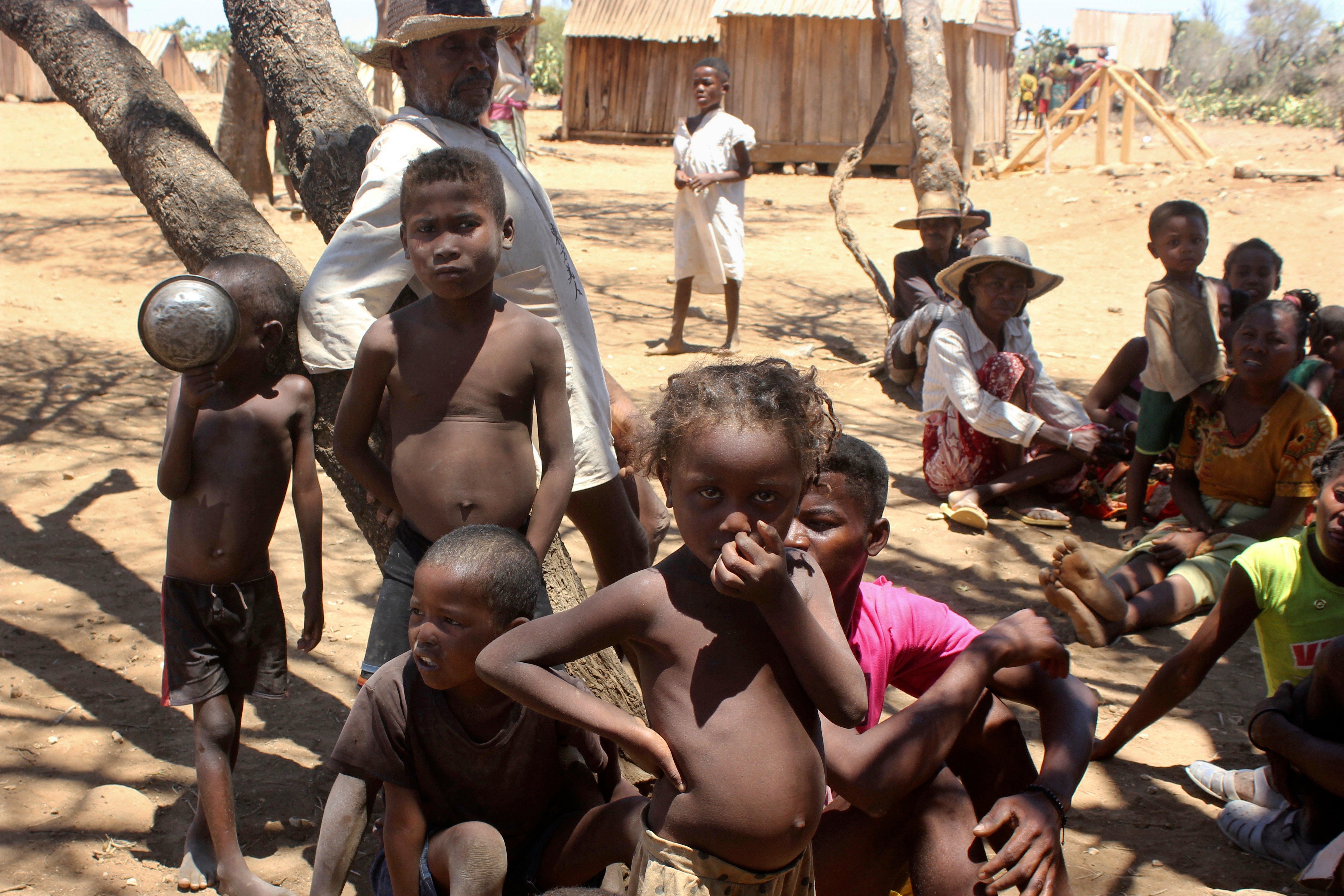In southern Madagascar, 'nothing to feed our children'
“It’s the hunger that killed him,” the grieving mother says

Your support helps us to tell the story
From reproductive rights to climate change to Big Tech, The Independent is on the ground when the story is developing. Whether it's investigating the financials of Elon Musk's pro-Trump PAC or producing our latest documentary, 'The A Word', which shines a light on the American women fighting for reproductive rights, we know how important it is to parse out the facts from the messaging.
At such a critical moment in US history, we need reporters on the ground. Your donation allows us to keep sending journalists to speak to both sides of the story.
The Independent is trusted by Americans across the entire political spectrum. And unlike many other quality news outlets, we choose not to lock Americans out of our reporting and analysis with paywalls. We believe quality journalism should be available to everyone, paid for by those who can afford it.
Your support makes all the difference.“It’s the hunger that killed him,” the grieving mother said.
In this village in Madagascar’s extreme south, the 31-year-old Lasinatry lost her 3-year-old boy in June as hunger swept the region, more severe than in recent years.
“We, the parents have nothing to feed our children aside from tamarind and the cactus that we find around us,” she said.
On a visit this week, The Associated Press spoke with suffering families who are among the 1.5 million people in need of emergency food assistance, according to the U.N. World Food Program. It’s a consequence of three straight years of drought, along with historic neglect by the government of the remote region as well as the COVID-19 pandemic.
Mothers are now trying to feed their children with unripe mangoes, and with tamarind mixed with clay. Many children have the spindly legs, reddish hair and pot bellies of malnourishment. Tired, they rest under trees and no longer play.
After reports emerged of at least eight children dying, the president of this Indian Ocean island nation, Andry Rajoelina, visited the region and vowed to “win the war against malnutrition.”
Some food has been distributed, but the WFP said it’s not enough and residents said the handouts last just a few days. The WFP said it has enough supplies to help just a half-million people through the end of this year
Southern Madagascar is on the brink of a humanitarian disaster, the U.N. agency said, and three out of four children in the Amboasary district at the epicenter of the crisis have left school to help their parents find food.
Farmers said they can no longer cultivate because of lack of rain, and they have given up cattle farming because of theft. Some villagers said they have sold their most basic possessions — cooking pots, clothes, school notebooks — for food.
Some people now cut down trees to make charcoal, acknowledging that worsens the drought but saying they have no choice if they want to survive.
One mother, Toharano, said four of her 14 children died in June and July.
“Who can support not eating in the morning, midday and night?” she asked, exhausted by hunger and the heat. “The children wake in the night, hungry.”
The names of the dead are kept in a notebook held by the village leader, Refanampy.
“We’re used to famine, but this time it’s just too much,” he said. “Before this, we didn’t have people dying (of hunger) in our village.”
The river Mandrare, which traverses the region, is now dry. Ten-year-old Masy Toasy walked in the direction of men who dug into the sand in search of water.
“It’s here that we tried to grow sweet potatoes, but they’re all dead,” the girl said. On the other side of the river is her school, but she said her parents have sold her notebooks to buy a little rice.
“Residents have no more resources to allow them to face this crisis,” said Theodore Mbainaissem with WFP, who said the extent of the hunger caught humanitarians and authorities by surprise.
And with COVID-19 and restrictions imposed to slow its spread, residents of this hungry region couldn't go elsewhere to find work, Mbainaissem said. Those restrictions have now been lifted.
“For now," he said, "the only solution is to aid them by bringing in enough food for the months to come.”